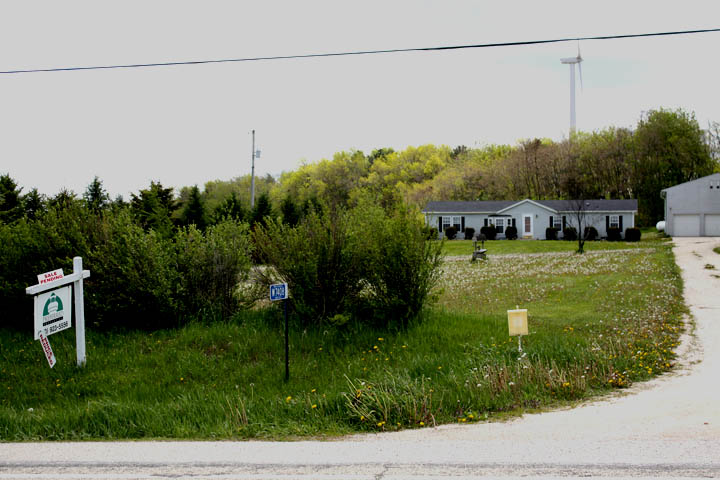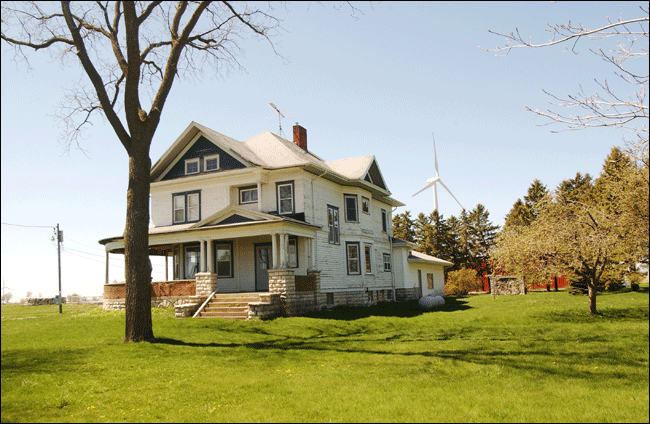Entries in Invenergy (41)
10/5/10 Big Worries in St. Croix County about proposed project AND Chasing down the myth of the 'well funded' anti-wind groups AND Chapters 3,470 of "Wind Developers Behaving Badly" --Wind Goliath stomps on and laughs off local government law.
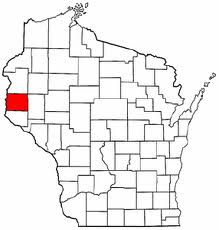
NOTE FROM THE BPWI RESEARCH NERD: The turbines mentioned in the story below will be close to 500 feet tall if blade tip length is included. The turbine height here is for hub height of the tower itself, minus the blades. Scroll down to the previous post to see a 500 foot turbine in a project now being constructed in the Town of Glenmore, Brown County by the same company proposing this project in St. Croix county.
RESIDENTS VOICING CONCERNS OVER WIND TURBINE PROJECT IN ST. CROIX COUNTY
SOURCE: WQOW TV, www.wqow.com
October 4 2010
Town of Forest (WQOW) – Much of our countryside is filled with cornfields and forests. Now, imagine the landscape dotted with wind turbines. That’s the picture being painted in one town and many people there are hot about it.
A Wisconsin energy company wants to build almost 40 wind turbines in the Town of Forest, that’s in St. Croix County. Each turbine would be more than 325 feet tall. Emerging Energy, LLC. has been exploring the idea for a few years and then in August, the town board approved the deal.
“We don’t feel there was a lot of information given at the township level to the citizens,” says Matt Radintz, a concerned resident.
That isn’t their only concern.
“We’re concerned about some of the effects of the wind turbines in our area,” says Radintz.
They’re talking about the shadows created – along with noise.
“We did hear the low frequency hum, it was a constant hum and with the turbines also a whoosh, it actually sounded like a jet plane going over head constantly, but you get the pulsating whoosh,” a woman who had recently visited a wind farm in Iowa told the crowd Sunday night.
The Town of Forest isn’t zoned, which is why residents feel their community was targeted for the project. The state is working on coming up with unified rules to address wind turbines, but because the project is already approved the town would be exempt.
“There are specific regulations right now that have yet to be determined at the state level, that will determine the setbacks and we feel that the reason this got pushed through is to get underneath those,” says Radintz.
Since the agreement was made, the group has held several meetings and hopes a petition can persuade the board to rethink the plan at least until there’s more information available.
“We want them to take a step back look at all the issues that we’re concerned about and put it on hold until we have some answers,” says Radintz.
WQOW News 18 spoke with an employee from Emerging Energy Monday. Bill Rakocy says the agreement in August was just the next step in getting the turbines built. The plan is to have them built no later than 2013. Rakocy says there were a couple of hearings held in 2008 and again this year about the project.
The project is part of an effort to have ten percent of the state’s energy come from renewable resources by 2015.
EXTRA CREDIT: Who is Bill Rakocy? He's developing the St. Croix project, but what else does he do?
From the TOWN OF MISHICOT
Office of the Town Clerk
618 Tisch Mills Road
Mishicot, WI 54228
Phone: 920-776-1597
e-mail address: mishicottown@charter.net
POSTED TO THE DOCKET ON JUNE 28, 2010
To whom it may concern:
At the annual meeting of the Town of Mishicot, on April 13th, 2010, it was brought to the attention of the people in attendance that the appointment of Bill Rakocy of Emerging Energies to the State Wind Siting Council should be terminated due to conflict of interest.
Emerging Energies has land under contract for seven wind turbines in the Town of Mishicot that has been denied by the Manitowoc County Wind Ordinance. By Bill Rakocy's own admission he has stated that he would benefit from a lesser setback on the standards. The standards of the PSC should be created to address health and safety with the back of engineering standards and not personal profit of wind developers.
This letter is sent in response to a majority vote of those in attendance at said annual meeting.
Sincerely,
The Mishicot Town Board
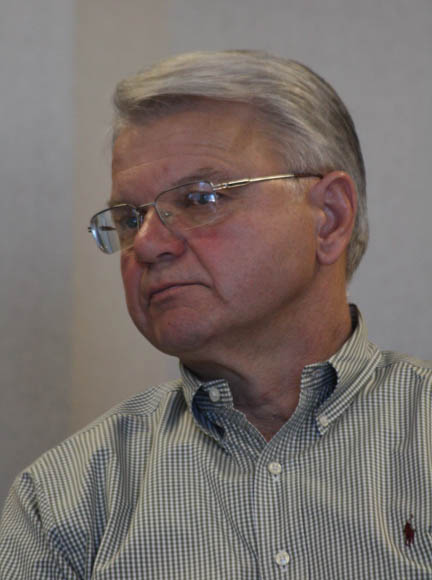 NOTE FROM THE BPWI RESEARCH NERD:
NOTE FROM THE BPWI RESEARCH NERD:
At Wind Siting Council meetings, member Bill Rakocy has been vocal about wanting as few restrictions on his wind development business as possible.
Questions have been raised about wind siting concil members with financial interest in the outcome of the rules having a direct hand in creating them.
“We’re excited to develop as much wind [power] as we can in Wisconsin,” says partner Bill Rakocy."
“The permitting process is a rather long-term effort,” says Rakocy. “A conditional use permit is good for two years, typically, and it may take you all of that two years to get the balance of the project details put in place. And then there’s production tax credits available from the federal government, and if they expire in the midst of the project, all your work is for naught.”
SOURCE: "Wind Power's Wind Fall" Marketplace Magazine <http://www.marketplacemagazine.com/content/357_1.php>
SECOND FEATURE

NOTE FROM THE BPWI RESEARCH NERD:
In an Wisconsin State Journal article [8/15/10] regarding new wind rules, reporter Clay Barbour refers to 'well-funded anti-wind organizations' in Wisconsin.
Better Plan contacted Barbour several times to ask about his source for this statement, but received no reply.
Balbour's article also contains quotes from Barnaby Dinges, who furthers the myth of the well-funded anti wind organization with statements like this:
“This isn’t like any grass-roots opposition we have seen elsewhere,” he said. “These aren’t just concerned citizens going to meetings. These are mass mailings, billboards, full-page ads. It’s more professional and it costs a lot of money.”
Dinges, who is not identified in the article as the head of an Illinois public relations firm called "The Dinges Gang", has been hired by wind developer Invenergy to push its projects in Wisconsin. Dinges Gang clients also include Abbott Laboratories, Illinois Casino Gaming Association, Montsanto and Jim Beam.
In the same article, Jennifer Heinzen, who is identified as a wind siting council member, says, “I have my suspicions that they are getting help from some groups from outside the state, but that has never been confirmed,” she said, referencing persistent rumors of coal and natural gas companies helping to kill wind projects here.
Balbour's article fails to mention Heinzen is also president of RENEW Wisconsin, an organization which lobbies on behalf of wind development and accepts funding from 'tera watt' business sponsors' such as Alliant Energy, American Transmission Company, and We Energies. Like the Dinges Gang, RENEW also receives money from wind giant, Invenergy.
Why Balbour's article failed to identify Dinges and Heinzen's financial ties to Invernergy, and other corporate clients is unknown.
So how do local groups identified in Balbour's article as 'anti-wind' raise money?
Better Plan received this a few days ago.
Perhaps Clay Balbour will write a follow up story about how things are really done on a grass roots level in our state: old-fashioned community fund raisers and a lot of hard work by local residents.


FROM THE CALUMET COUNTY CITIZENS FOR RESPONSIBLE ENERGY:
CCC4RE will be having our biggest fund raiser of the year in October: The Haunted Halloween Golf Cart Rides.
It's alot of work and many many people are involved to get this to work. Many volunteers will work all six nights and many work for days before getting it set up.
I'll be working all nights and will help set up on the 23rd. I work in the concession stand where we serve hot dogs, walking tacos, nachos, hot chocolate, apple cider and other goodies along with my husbands' outstanding chocolate chip cookies.
This helps to pay our bills. Let me know or if you have any other ideas.
Thanks,
Diane
Better Plan, Wisconsin hopes the event goes well and supports the true grass-roots efforts of the CCC4RE and all Badgers working to protect homes and families and wildlife and natural habitat from badly sited industrial scale wind turbines.
A bumper sticker we'd be glad to post on our car:
"I'd rather be riding a haunted golf cart in Calumet County in support of CCC4RE than living too close to a 500 foot wind turbine "
THIRD FEATURE
GOODHUE WIND SHRUGS OFF TOWNSHIP ORDER TO 'DESIST'
SOURCE: Finance & Commerce, finance-commerce.com
October 4, 2010
By Arundhati Parmar,
A proposed wind-energy project in southeastern Minnesota is pitting a local township’s board against the wind farm’s developers.
Last week, the Belle Creek Township board’s attorney sent a “cease and desist” letter to AWA Goodhue LLC, the developer of a 32,500-acre wind-turbine project in Goodhue County. The letter states that the developers have been doing construction work within the borders of the township in violation of an interim ordinance that the board approved earlier this summer.
On Friday, AWA Goodhue Wind’s attorney responded by essentially questioning whether the interim ordinance the board approved has any legal force under Minnesota law.
Minneapolis-based National Wind is the local developer of AWA Goodhue LLC, which is managing the project that aims to build 50 turbines. The Minnesota Public Utilities Commission (MPUC) and Goodhue County board of commissioners approved the project earlier this year, but it ran into opposition from residents who live near the 32,700-acre site
9/30/10 Once they are up, they are up: Residents struggle with Invenergy wind turbine noise AND Wind Turbines in the News
 NOTE FROM THE BPWI RESEARCH NERD:How loud is too loud? In the state of Oregon, turbine noise limited to 35 decibels is causing trouble for those who reside in the Invernergy project.
NOTE FROM THE BPWI RESEARCH NERD:How loud is too loud? In the state of Oregon, turbine noise limited to 35 decibels is causing trouble for those who reside in the Invernergy project.
Because of the pulsing characater of wind turbine noise, studies show it to be more disruptive at lower noise levels than noise from road traffic, aircraft, or trains. Chronic sleep disruption due to nighttime turbine noise is the most common complaint from wind project residents Wisconsin.
The new wind siting rules put forth by the Public Service Commission set turbine noise limits in our state at 45 decibels at night and 50 during the day.
The World Health Organization recommends a nighttime noise limit of 40 decibels for healthy sleep. Why the Public Service Commission has chosen noise limits above World Health Organization guidelines is unknown.
WILLOW CREEK TOLD IT MUST QUIET DOWN
SOURCE: East Oregonian,
September 29 2010
By Erin Mills,
A reluctant Morrow County Planning Commission finally spelled it out for Invenergy, the developer of the Willow Creek Wind Project: not only is the project too loud for nearby homes, but Invenergy will be paying for another noise study once its six-month grace period is up.
The 72-megawatt project and four of its neighbors in the Willow Creek Valley north of Ione have been locked in a struggle over noise since before the turbines began turning in late 2008.
After many hours of testimony, the planning commission ruled in May that the project did break the state noise standard, and gave the Chicago-based company six months to comply.
Both parties appealed the decision to the Morrow County Court. The court agreed the planning commission’s decision lacked meat on its bones; it didn’t detail why, or say who was to determine that Willow Creek was in compliance.
At a meeting Tuesday night, commissioners found consensus on several important points. First, they said, the evidence presented by Invenergy’s — and the neighbors’ — noise experts indicated the project broke the state noise rule at nearby homes. The rule states that a wind facility must not increase the ambient background noise of 10 adjusted decibels, or 10 dBA. If a developer does not determine the ambient noise prior to building the facility, there is an assumed ambient of 26 dBA. That means a wind facility that chooses the assumed ambient can generate only 36 dBA at nearby homes.
The commission briefly discussed the percentage of time a facility should be allowed to break the rule, a major point of contention with the two acoustical experts who earlier testified. But Vice-Chair Jeff Wenholz put such quibbling to rest. The developer chose to take the assumed background level, he said, and the noise rule is the noise rule.
“It’s no different than if the speed limit is 65 (mph),” he said. “The cop can write you a ticket for 66.”
The commission next decided that granting Invenergy six months to fix the problem was reasonable, although Pam Docken initially disagreed, saying Willow Creek has already been operating — and breaking the rule — long enough.
“Do you think six months is just flat too long?” asked Chair David Sykes.
“Yes, but I think I’m a solo act here,” Docken replied.
She was right. Eventually she and the group decided Invenergy needs time to adjust. It can finish adjusting sooner than six months, they said, but it must be done when the time is up.
County Counsel Ryan Swinburnson questioned whether Willow Creek should be allowed to run during the six months. The commission agreed it could.
Unlike at previous meetings on the topic, only a handful of people attended, the six neighbors and two Invenergy representatives. Mike Collins, an Invenergy asset manager, said he could not immediately comment on the commission’s decision.
One of the neighbors, Mike Eaton, said he felt numb.
“It’s just a process that we’re in,” he said. “I think the planning commission had a really tough job on their hands.”
Dave Mingo, another neighbor, said Invenergy could fix the problem “in a day,” with an acceptable easement payment. Invenergy made offers to the neighbors shortly after they first complained. All four — two of the neighbors are couples — turned the company down, saying the amount was too small.
The planning commission’s decision vindicated the neighbors’ claims, doggedly expressed for almost two years. But the acknowledged fact — voiced even by commissioners — was that Invenergy would appeal their decision.
“We feel it’s going in the right direction,” Mingo said. “I don’t feel it’s over, by any means.” The planning commission will finalize its decision Oct. 26 at 7 p.m. at Heppner City Hall.
 WIND TURBINES IN THE NEWS
WIND TURBINES IN THE NEWS
Panelists lambaste state about wind power studies
SOURCE: Sun Journal, www.sunjournal.com
September 30 2010
By Eileen M. Adams, Staff Writer,
RUMFORD — Panelists at a wind energy forum Wednesday night lambasted the state for not conducting more studies on the potential impact of wind farms and Dr. Dora Ann Mills, the state’s chief medical officer, for not pursuing possible health issues related to them.
The panelists warned that wind energy would be both more expensive and result in greater pollution.
About 50 people turned out for the decidedly one-sided presentation on potential wind farm development in Rumford and other locations in Western Maine.
The forum, sponsored by the River Valley Wind Education Committee, was held about a month before Rumford and Dixfield voters will decide whether to adopt wind energy ordinances.
Panelist J Dwight, an economist from Wilton and one of the four panelists, said using electricity generated from wind turbines would likely double utility bills by 2020.
“We have enough power already,” he said.
He said later during the forum that First Wind LLC of Boston, Mass., which proposes constructing about a dozen turbines on Black Mountain and an adjacent mountain, is financially bankrupt.
“This is a company that should be scrutinized,” he said.
Dr. Albert Aniel, a local doctor, said Mills has not had a study conducted on the effects of the Mars Hill wind farm on residents there.
“The Department of Health and Human Services is not interested,” he said.
Also speaking was Robert Rand, a sound engineer from Brunswick who displayed a series of graphs showing how sound levels from turbines could affect people living at various distances from a turbine. He also played a recording of two turbines he said was made one mile from the turbines. He was eventually asked to turn off the sound when Rumford wind ordinance committee member Len Greaney asked whether people in the Mountain Valley High School auditorium would have a problem with such noise.
Rand said he has conducted studies or found studies that show how people can become highly annoyed when sounds reach 45 decibels, which is the level sanctioned by the state for nighttime sounds. During the day, the permitted level rises to 55 decibels.
Rumford resident Dan Richard asked whether it was safe to say that the panel is against wind power in general.
“This panel is not in favor of wind,” Dwight said.
Richard said about 600,000 gallons of fuel oil are used each day at the Cousins Island electrical plant.
“And look how many trucks roll in there each day,” he said.
Another man asked whether Rand had measured the level of noise coming from the NewPage mill in Rumford.
Rand said that although he has not measured it, any noise coming from mills tends to be steady, and not variable as he said wind turbines produce.
Karen Pease, a Realtor from Highland Plantation, where another wind farm is proposed, also spoke as part of the panel.
She said turbine construction would decrease the value of homes sited within two miles.
She said a study conducted in Illinois suggested that wind farm developers should guarantee property values, and turbines should be shut down if the noise level goes beyond 10 decibels above ambient sound.
Both Dixfield and Rumford residents will vote on their respective proposed wind turbine ordinances on Nov. 2.
EDITORIAL: "13% ELECTRICITY HIKE TOO MUCH"
Sept 26, 2010
Hearings began last week on Alliant Energy’s request for a 13 percent electricity rate hike.
We know from past experience the final rate granted by the Iowa Utilities Board will not be 13 percent, but just the same today are urging the board to allow as little a rate increase as possible to cover expenses, as there are many individuals and companies who cannot afford any more.
The increase sought by Interstate Power & Light, a subsidiary of Alliant, would yield $149.9 million to the utility. It said it needs the money to offset additional transmission costs, recover the cost of building the $478 million Whispering Willows East wind farm south of Hampton, recover $3.4 million for past improvements to a generating station in Cedar Rapids, and for environmental controls at its Lansing power plant.
The increase would be on top of a 7 percent rate increase in January, mainly to pay for costs of recovering from record floods in June 2008 and ice storms in recent winters.
The increase sought by Alliant before the 7 percent was granted was 18 percent. So if a similar percentage is granted, customers can expect the current 13 percent increase will result in a 5 percent increase. That’s still pretty hefty for such a short time between increases.
We are pleased, though, with the utility’s investment in wind power in our region. The company has invested $478 million investment in the Whispering Willow-East Wind Farm in Franklin County. According to Alliant, the farm is powering nearly 50,000 Iowa homes with clean, renewable energy.
Green energy is not expensive, Alliant officials have said, nor is installation of pollution control equipment, such as the $188 million investment to reduce emissions from the Lansing power plant.
The consumer advocate office has asked the utilities board to deny the increase and instead order Alliant to reduce electric rates by $1.8 million.
The Mason City Chamber of Commerce has not officially taken a stance on the current rate hike request, but did so last year when the 18 percent request was in play.
Members have expressed concern the current proposal could make Mason City less competitive, said Robin Anderson, executive director of the chamber. She said the chamber helped organize a meeting in June between local members and Alliant officials. From a customer service standpoint, members are satisfied with Alliant, but are concerned their rates will not be competitive in the foreseeable future, she said.
Anderson pointed to a survey of chamber members in 2009. More than 100 members responded. An alarming rate, more than 15 percent, said the rate increases sought at that time would threaten their ability to continue operating in Mason City.
Also, 88 businesses responded to a question about whether utility rates would be considered in a decision to expand in the near future. Sixty-four said they would.
Asked which utility cost impacted their business the most, 69 percent said electricity, 29.9 percent natural gas and one percent water.
Obviously our region’s economic fortunes are closely linked to having competitive, reliable energy. We appreciate Alliant’s reliability and its overall fine standing as a corporate citizen, but ask that it — and mainly the Iowa Utilities Board — go as lightly as possible with this rate increase.
Board Votes not to accept money
SOURCE: TELEGRAM & GAZETTE STAFF, www.telegram.com
September 30, 2010
By Kim Ring
BRIMFIELD — After hearing three hours of mostly opposing comments from residents, selectmen last night voted unanimously not to accept $30,000 from First Wind, the company hoping to build several turbines in town.
The funds would have been used to study the financial impact of a wind energy facility on West Mountain, near Steerage Rock.
About 160 people attended the public hearing at Brimfield Elementary School, most speaking in opposition to the project that would site eight to 10, 400-foot wind turbines on the ridge just north of Route 20, and expressing concern that taking the money would allow First Wind to move closer to its goal.
Board members said if they had decided to accept the money, the town would not have been bound to any future agreements, nor would it have been forced to allow the turbines to be constructed; rather, the money would have helped fund research about the project.
Health Board Chairman Richard Costa and other local officials visited a facility at Mars Hill, Maine, and said he now believes the project would be wrong for Brimfield.
He said residents in Maine told him stories of health issues, decreased property values, and turbine noise difficult to tolerate.
“I don’t really think that this project would be a good fit,” he said, to rousing applause.
Police Chief Charles T. Kuss also went to Maine and said the turbines there, not as tall as the ones planned for Brimfield, were visible from 40 miles away.
He said the folks he spoke with, most of whom favored the project, “did have some economic tie to the industry.”
But some residents of Mars Hill are suing First Wind over the project.
Dr. Elizabeth Smola said she is concerned because recent studies show serious health risks associated with living near wind turbines and being exposed to very low-frequency noise, which is inaudible.
The risks can cause thickening of the heart wall, balance disorders and memory loss, and most often affects fetuses, children and younger people, she said.
In Brimfield, some residents said they favor the turbines and a move toward green energy. One man who lives on St. George Road said he finds the turbines “elegant looking.”
A few residents said that, while they favor green energy, they oppose the turbines in Brimfield, where they would be within 2,000 feet of 79 homes.
“I’m a tree-hugging liberal,” said Anton Prenneis of Brookfield Road, adding that he was initially excited about wind power until he researched what was proposed for Brimfield.
He said as a bluegrass fan who knows the best songs are written about towns devastated by coal mines, “I don’t want to see that happen to the town.”
Dale LaBonte said she drives a Prius, lives in a passive solar home and has no dishwasher, but opposes the wind facility because it will affect the stillness she enjoys while walking her dog at night.
Many were concerned about the “flicker effect” which causes a strobe-like light at certain times of the day. Some, including Doris Carlson, who runs a riding stable on Brookfield Road, were concerned about having to deal with that at their homes.
Eric J. Jaeger, who called himself a “retired reformed opera singer,” said he would, if needed, “sing ‘The Impossible Dream,’ over and over to stop this” project from moving forward.
Clad in a shirt that read “Mafia Go Home,” John Mortarelli vocally opposed the project, saying he’s done research and questioned whether the company is viable and the source of its funds.
He said the town’s bylaws prohibit the towers and that should be enough to quash the project.
But there is concern over Gov. Deval Patrick’s support for a law that would allow the state to have oversight when it comes to siting wind turbines.
Some fear the proposed law would take away local control and make local bylaws that prohibit the towers moot.
9/17/2010 When it comes to big wind projects, bats are in need of a super-hero-- National Geographic weighs in on what can be done to stop wind turbines from killing thousands of bats
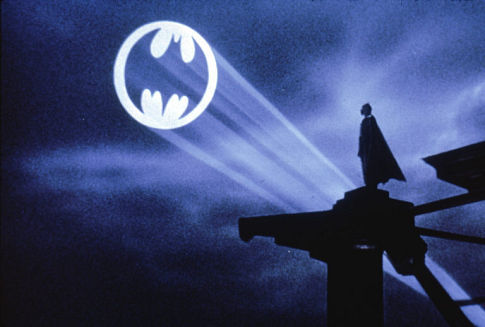
How many bats are dying in Wisconsin wind projects?
Three recent reports indicate the bat kill rates in Wisconsin wind projects are ten times the national average and the second highest in North America.
According to a recent post construction mortality report from We Energies the 88 turbines that make up the Blue Sky/ Green Field project have killed 7,000 bats during the first two years of operation.
Kill rates were the same in Dodge County's Cedar Ridge project and slightly higher in the Fond du lac County's Invenergy Forward project which is located alongside a national wildlife refuge.
Why Wisconsin bat mortality rates are so high in comparison to other parts of North America is unknown.
HOPE FOR STEMMING WIND ENERGY’S TOLL ON BATS
SOURCE: National Geographic News, news.nationalgeographic.com
September 15, 2010
By Andrew Curry,
Windmills—clean, quiet, simple and endlessly renewable—may be the ultimate icons of green energy. But after sundown, their whirling blades have an unintended consequence that researchers are just beginning to understand: They kill bats by the thousands.
Their greatest impact may be on the few species of bats that migrate. Bat experts say that the problem, which peaks during migration season from July to late September, may be worse than we know—but there’s cautious optimism, too. Proposed solutions include installing speakers that blast ultrasound to drive bats away and selectively shutting off windmills when bats are most active.
Killed by the Thousands
The first hint that wind farms were killing bats came from the Mountaineer Wind Energy Center on Backbone Mountain on the ridge of the Alleghenies near Thomas, West Virginia (map). Biologists looking for birds killed by the windmills in 2003 found nearly 400 dead hoary bats and eastern red-tailed bats. They soon concluded that the West Virginia site alone was killing between 1,400 and 4,000 bats a year.
In the years since, bat experts have raised the same alarm at other wind farms in the United States and Europe. Although there have also been concerns about windmills killing birds, the problem might be more severe for bats. For reasons no one fully understands, bat species that migrate over long distances seem to be attracted to the tall windmill towers. Perhaps they mistake them for trees, or want to hunt the insects that swarm around the tall, white structures. Maybe they’re simply curious.
When they fly too close, the nocturnal creatures are often killed by windmill blades, which, at the tips, can reach speeds of more than 200 mph. These massive wing-like blades strike some of the bats, while other bats are killed when they get sucked into the low-pressure zone behind the spinning blades. The low pressure can rupture bats’ tiny lungs and hearts.
As more and more wind energy installations are built, researchers are finding proportionately more dead bats. But one problem in gauging the full scope of the carnage is that researchers have almost no idea how many bats there are. Since they fly in the dark, it’s hard to count them the way that researchers count birds. Migratory bats tend to be solitary creatures, roosting in trees and crevices, so they can’t be counted easily when they’re asleep. And they’re too small—many weigh less than an ounce—to be tracked as birds sometimes are, with tags that can pinpoint their whereabouts through the use of GPS, or global positioning system.
“No one’s ever been able to actively track these bats. Before they started showing up under wind turbines, they were very infrequently observed,” says Paul Cryan, a bat expert working for the U.S. Geological Survey in Fort Collins, Colorado. “The logistics of following animals at night without knowing where they’re going and where they’re going to land is tremendously difficult.”
That uncertainty makes it difficult to tell what kind of impact windmills are having on the overall population—and how effective efforts to reduce the number of bat kills are. “We don’t know if we’ve mitigated the effect of the kills, or if we’re just delaying a population crash for 10 or 15 years,” says Ed Arnett, director of programs at Bat Conservation International in Austin, Texas. “But if you start adding it up over time, there’s just no way the animals can sustain this.”
Indeed, the many new wind projects across the United States—enough new windmills to power 2.4 million homes were installed last year—couldn’t have come at a worse time for bats.
Biologists are already overwhelmed trying to unravel a mysterious fungus known as white-nose syndrome that’s killing hundreds of thousands of cave-dwelling bats up and down the East Coast, with no cure in sight. “Those of us charged with the well-being of bats have really had the ground fall out from under us in the last 10 years,” Cryan says.
Renewable Energy Coexistence
But new research suggests that there may be hope on the horizon for protecting the migratory bats from windmill blades, at least. New methods for reducing bat kills are being tested in the field, and initial results are promising. One option is installing speaker systems on windmills to confuse and irritate bats with ultrasound noise, a frequency too high for human hearing. “It jams them, basically,” Arnett says. “We’re flooding them with white noise, which makes it uncomfortable and disorienting airspace to be in.”
So far, experimental speaker systems have reduced the number of bat fatalities 20 to 53 percent. But there are at least two problems with ultrasound systems, which cost $20,000 per experimental unit. First, modern windmill blades cover an area the length of a football field, too far to effectively project sound at that frequency. And the long-term consequences to bats and other wildlife of constant ultrasound are unclear.
Arnett has also experimented with an obvious solution: Turn off the windmills when bats are most active. For the past two years, Arnett has been working with Iberdrola Renewables, a large Spanish-owned wind energy provider, to selectively “feather,” or shut down, wind turbine at a wind farm in Garrett, Pennsylvania (map), when wind speeds are low. “It’s a time when we are not generating a whole lot of electricity to begin with,” says Iberdrola spokeswoman Jan Johnson.
In a forthcoming study, Arnett reports that during peak migration season, turning off windmills on the warm, late-summer nights bats like best—nights that don’t have that much wind to harness for energy, anyway—reduced annual bat fatalities by between 44 and 93 percent. Best of all, Arnett estimated that turning off windmills on the nights when bats were most active cost only .3 percent of the wind farm’s total annual power production. “We think there are ways to refine it so there are minimal impacts on the economics,” says John Anderson, siting policy director for the American Wind Energy Association.
The idea is gaining currency. Wind energy company Invenergy earlier this year agreed to time-of-year operating restrictions as part of a plan to protect the endangered migratory Indiana bat at a project it is now building in Greenbrier County, West Virginia. A federal judge temporarily blocked that project in response to a lawsuit by environmentalists; similar action over the risk to bats has been threatened over a new wind project in Maryland.
USGS bat expert Cryan says the Iberdrola study results are a relief to those who love the embattled bats. “Curtailment offers a great hope of minimizing bat fatalities,” he says. “Finally, this is something where we can come up with a solution to the problem.”
Note from the BPWI Research Nerd: The only reliable way to stop turbines from killing bats is to shut down the turbines at night.
9/15/10 Why are there so many complaints about living with wind turbine noise? AND What's going on with the wind siting rules? AND Can I get some maintenance for this turbine? What do you mean you're bankrupt? AND Mafia discovers a clean, green, dirty money laundering machine
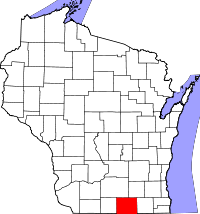 Wisconsin small business owner, Jim Bembinster, knows a lot about the complicated subject of wind turbine noise.
Wisconsin small business owner, Jim Bembinster, knows a lot about the complicated subject of wind turbine noise.
He spent 14 months focusing on noise issues as a member of the Large Turbine Wind Study Committee for the Town of Union (Rock County). He also helped author the Town of Union Large Wind Ordinance, considered by many to be the best in the state.
This ordinance has been adopted by local governments throughout Wisconsin, including five contiguous Towns in Rock County. Local governments from other states have used it for a model in creating their own ordinances.
The Town of Union Ordinance calls for a turbine noise limit of five decibels over the existing noise levels in the community.
The wind siting rules approved by the Public Service Commission, which preempt ordinances like the Town of Union’s, allow a nighttime noise level of 45dba—or an approximate increase of 20 decibels over normal rural noise limits.
Here, Mr. Bembinster explains how a 20 decibel increase will impact a rural community, and why masking turbine noise is so difficult.
The general rule for additional noise is this:
Adding 5dB is barely noticeable.
Adding 10dB is clearly heard— as it’s twice again as loud.
Adding 15 dB is very loud and this will become the dominant sound.
If ambient [existing] noise levels in a rural community are 25dB and turbine noise levels are at 45dB, there will be a problem.
The reason is the turbine, at 20dB louder, will be the dominant sound.
Although developers say noise from the turbine will be masked by other environmental sound, such as the wind blowing through the trees, a noise loud enough to cover the turbine must also be similar in character and at least 15 decibels louder, which puts it at least 60dB. This would be something like a the noise from a large truck going by or a Harley.
Also, in order to mask the sound, the character of the two types of sound must be the same.
Take the example of a baby crying.
If you were in a room with people who were all having a conversation at say 50dB and a baby started to cry at 40dB, the baby’s cry would be clearly heard over the conversation because of the difference of character and the tone of the noise it makes.
If the baby ramps up the crying to 50dB --the same sound level as the conversation in the room, the baby’s cry will become the dominant sound in the room even though both the crying and the conversation are at the same decibel level.
This is why people trapped in wind farms have trouble with the noise even though the turbine is within its noise limits of 45dB. Ambient sounds in a rural area can’t mask the sound of a turbine because the quality of the noise is so different, much like difference between a baby crying and adult conversation.
Another way to look at is how loud it would need to be inside your home so that a Harley could pass by unnoticed. That would be really loud, and not the best circumstance for sleeping.
There is nothing in a rural community that makes a sound similar enough to a wind turbine to mask it, except perhaps a jet or helicopter passing overhead, which is exactly what wind turbine noise is often compared to by those now living in wind projects.
SECOND STORY
WIND TURBINE RULE CAN BE REVISED, PANEL SAYS;
CHANGE WOULD ADDRESS POSSIBLE HEALTH EFFECTS
SOURCE: Green Bay Press Gazette, www.greenbaypressgazette.com
September 16 2010
By Tony Walter
One of the three members of the Public Service Commission who voted for the wind turbine siting rules last month noted in a letter to two top state lawmakers that the panel can revise the rules to address the potentially harmful health effects of the turbines.
“While I support the overall rule because it will promote the development of wind in Wisconsin, the rule fails to provide a much-needed safety net for people whose health declines because of a wind turbine located near their home,” Commissioner Lauren Azar wrote to legislative officials in an Aug. 31 letter.
“As new information becomes available, the Commission can revise this rule.”
Azar wasn’t available this week to comment on her proposal that would require wind turbine owners to purchase the home of anyone who can prove that the turbine has a significant adverse health outcome. An aide in her office said Azar’s letter speaks for itself.
Invenergy LLC wants to build a 100-turbine wind farm in the towns of Morrison, Glenmore, Wrightstown and Holland with turbines that produce more than 100-megawatts of energy. CH Shirley Wind LLC is erecting eight 20-megawatt turbines in Glenmore.
An Invenergy spokesman said last month that the company plans to resubmit its application for the Ledge Wind Farm project, noting that the health issue has been studied by numerous groups that concluded there is insufficient evidence to prove the turbines put people and animals at risk.
That proposal has prompted the creation of a Brown County citizens group speaking out against the wind turbine industry, arguing there hasn’t been sufficient study on health impacts.
Carl Kuehne, a member of the board of directors of the Brown County Citizens for Responsible Wind Energy, said the absence of definitive evidence on the health impact of wind turbines is reason enough to conduct more studies.
“No. 1, there is no need to move ahead today with more wind turbines in Wisconsin,” Kuehne said.
“The utilities are currently meeting the energy mandates set by the state government. So let’s study the situation. There’s certainly enough ad hoc evidence that wind turbines do have an impact on people and animals. Let’s study it and find out before we create more destruction on people. We have the opportunity.”
Last month, the PSC adopted rules for projects less than 100 megawatts. The rules can be altered by the state Legislature and lawmakers can ask the PSC to make changes. The issue has been assigned to the Assembly’s Committee on Energy and Utilities, which is led by Jim Soletski, D-Ashwaubenon, but no meeting date has been set.
THIRD STORY:
BANKRUPTCY RAISES WIND TURBINE ISSUES
September 16, 2010
By Bruce Burdett
PORTSMOUTH — With its wind turbine supplier bankrupt, Portsmouth is looking for a new company to provide the service it had believed was covered under the equipment’s original warranty.
Bankruptcy proceedings for Canadian firm AAER were completed in July. Pioneer Power Solutions bought some of AAER’s assets ”but appears unwilling to provide warranty coverage or operations and maintenance support,” Finance Director David Faucher wrote in a Sept. 8 memo to the town council.
Mr. Faucher and Assistant Town Planner Gary Crosby, who has overseen much of the town’s wind turbine effort, said they have met with representatives of Templeton Power and Light which has commissioned an AAER wind turbine generator similar to Portsmouth’s in hopes of partnering with the Massachusetts utility for a long term maintenance services contract.
But Mr. Faucher said Templeton is not yet at a point that it can enter into such a partnership.
So for now, Mr. Faucher recommended that the town council enter into an emergency one-year maintenance and service agreement with Solaya, a division of Lumus Constrictoon Inc. of Woburn, Mass. The council was scheduled to discuss and possibly vote on the agreement at its meeting on Wednesday this week (after the Times went to press).
The agreement would include two 6-month scheduled maintenance sessions (the first being this month), around-the-clock monitoring and unscheduled maintenance. At the end of the year, Mr. Faucher said he would ask the council to award a competitively bid contract for a three-year period.
The agreement with Solaya is “very detailed and describes the monitoring , warranty protction and maintenance services we have been seeking.”
Cost of the year’s basic service is $33,000, and the town would be charged additional fees for extra work.
FOURTH STORY
SOURCE: The Independent, www.independent.co.uk
MAFIA'S DIRTY MONEY LINKED TO CLEAN ENERGY
September 16 2010
By Michael Day in Milan,
After decades of drug-running, extortion and prostitution, the Mafia appears to have found a rather more ecological way of laundering their money: green power.
And if the assets of the Italian police’s latest target are any indication, the Mafia is embracing the renewable energy business with an enthusiasm that would make Al Gore look like a dilettante. The surprising revelation of organised crime’s new green streak came as Italian police said yesterday they had made the largest recorded seizure of mob assets – worth €1.5bn (£1.25bn) – from the Mafia-linked Sicilian businessman Vito Nicastri, who had vast holdings in alternative energy concerns, including wind farms.
Organised crime in Italy has previously been notorious for trading in environmental destruction – principally earning billions of euros by illegally dumping toxic waste. But most of the newly seized assets are in the form of land, property and bank accounts in Sicily, the home of Cosa Nostra, and in the neighbouring region of Calabria, the base of the rival ‘Ndrangheta crime syndicate.
Police said the operation was based on a 2,400-page investigative report and followed 54-year-old Mr Nicastri’s arrest last year. He has since been released without charge, and has denied wrongdoing. But General Antonio Girone, the head of the national anti-Mafia agency DIA, said that Mr Nicastri, known as “lord of the winds”, was linked to Matteo Messina Denaro, the fugitive believed to be the Sicilian Mafia’s “boss of bosses”.
Senator Costantino Garraffa, of the parliamentary anti-Mafia committee, said the Mafia was trying to break into the “new economy” of alternative energy as it sought to launder money earned from crime. The seizure of Mr Nicastri’s assets “confirms the interest that organised crime has in renewable energy, which several annual reports on environmental issues have already stressed,” added Beppe Ruggiero, an official with the anti-Mafia association Libera.
Generous subsidies have led to rapid growth in wind power in Italy in recent years. Mr Ruggiero said: “It is very important for this sector to stay far from Mafia activities.” However, he stressed the need for renewable energy to develop in Italy’s poorer South. “Investment in renewable energy should not be discouraged,” he said, adding that the nuclear alternative would be “a losing choice”.
Recent estimates suggest the total annual turnover of Italy’s main organised crime groups is around €100bn (£83bn), or 7 per cent of GDP. Officials, including the Bank of Italy governor, Mario Draghi, have argued that organised crime has perpetuated poverty in the south of the country.
10/14/10 On being a red square in a yellow circle: A wind siting council member weighs in on the real cost of Wisconsin wind farms AND Wind Turbines Too Loud? Sorry Charlie, ain't a lot we can do for you now.
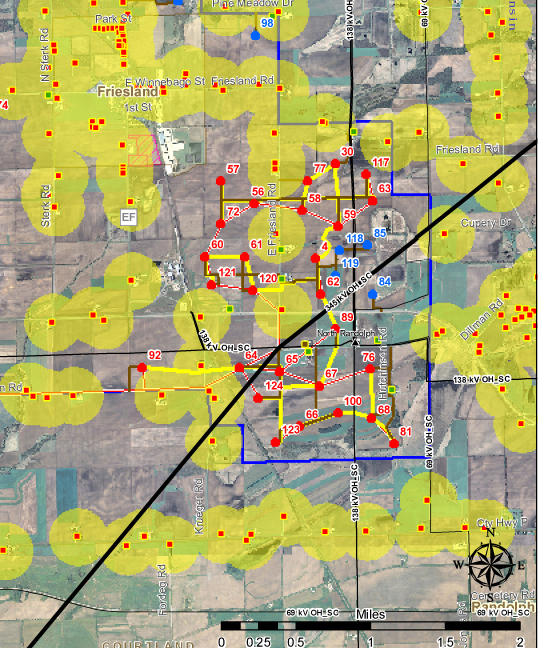
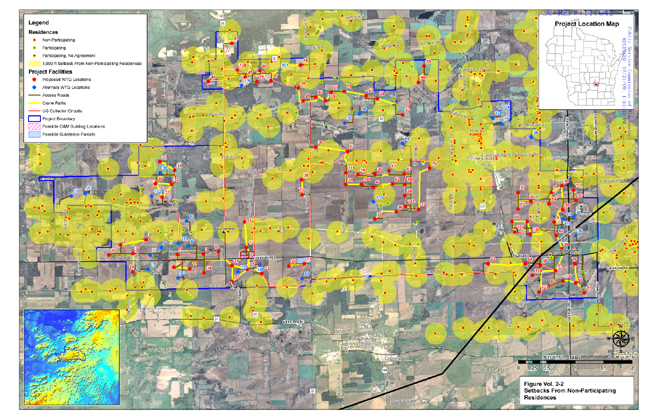
HOW MANY RESIDENTS WILL BE AFFECTED BY THE NEW WIND SITING RULES?
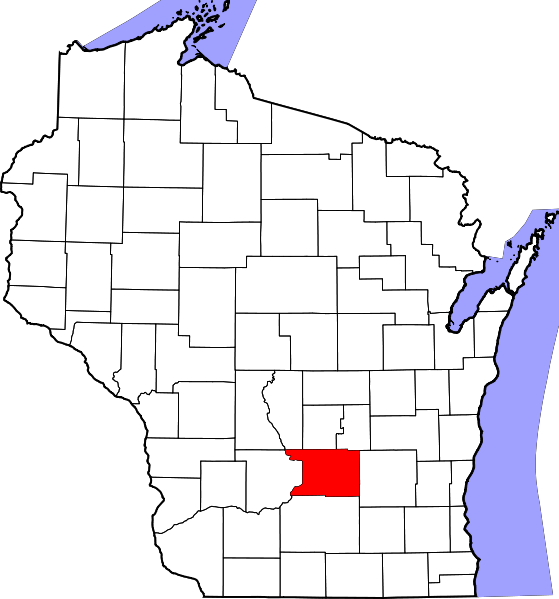
The red squares in the yellow circles on the map above represent non-participating homes in the WeEnergies Glacier Hills wind project currently under construction in Columbia County.
The larger red dots are the turbine locations. [Scroll down to see more detailed maps.]
The new wind rules adopted by the Public Service Commission have the same setbacks from homes as were used for this project.
One difference is the PSC required WeEnergies to offer to buy two homes in the project because seven turbines were to be located within half a mile.
The new rules do not include this sort of protection. Chairman Eric Callisto said by law homeowners have the right to sue the wind developer/owner and he felt that was all the protection they needed.
Although Wisconsin wind farm residents who have been forced to try to sell their homes because of turbine noise and shadow flicker have found no buyers, local wind developers say 400 to 500 foot tall wind turbines located less than 1500 feet a home have no impact on property values.
[CLICK HERE to watch Wisconsin Eye video: During the panel discussion, WPPI vice president Dan Ebert and WeEnergy's head of wind development Andy Hesselbach explain why turbines do not affect property value. ]
Or CLICK HERE to link directly to the Wisconsin Eye 'Newsmakers' feature "Future of Wind Energy"
Developers also say Wind energy is the cheapest way to get renewable energy and cite surveys which indicate stong public support for wind power.
Wind siting council member and Wisconsin realtor Tom Meyer weighs in on the matter.
This is not a question of whether or not people like, or favor "wind" as the lobbyists try to argue. Everyone likes wind, sun, water, earth.
The issue is this: The total cost of generating energy by the use of 400 and 500 foot tall turbines in Wisconsin’s rural communities.
Developers admit that they cannot get investors, who are primarily foreign investors, to put their money up unless the costs of access to the land are depressed.
To get the biggest area to install the highest number of 400 to 500 foot tall turbines, the developer needs to have the greatest access to the most land and compensate the fewest people with the least dollars.
The developer does not need your land, he needs to get one foot [away] from your land.
Every foot the developer is made to move away from a landowner whom he does not have to compensate, adds cost to the developer and reduces the bottom line to investors.
Every dollar spent to gain access to the right to disturbing the peace of a landowner reduces the bottom line.
For wind turbines to be profitable, the industry could improve the technology or depress the cost of access to the land.
By their actions, they prove they believe depressing land costs is more favorable than investing in improving the technology.
Their answer to improved technology is taller and more intrusive. That's not a real solution.
If the turbine can't produce energy without imposing on neighbors, there is no reason to spoil the earth, and threaten the water, and block the sun, to catch the wind.
-Tom Meyer
Wisconsin Wind Siting Council Member
NOTE: Tom Meyer was one of the authors of the minority report from the wind siting council. The report details why some council members strongly disagree with the recommendations sent forth to the Public Service Commission.
CLICK HERE to download pictures of homes in Wisconsin wind projects.
Below, detail maps of non-participating residences in WeEnergies Glacier Hills Project
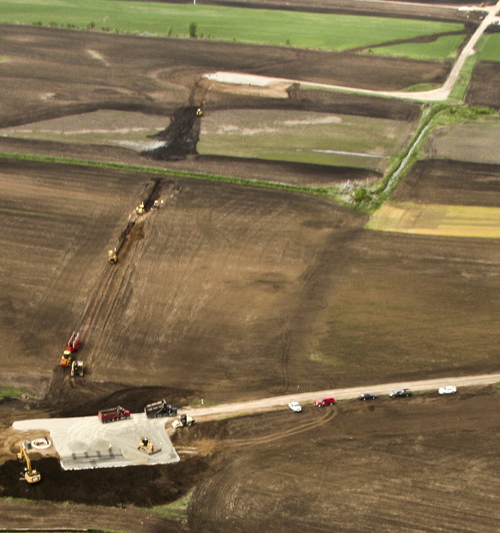
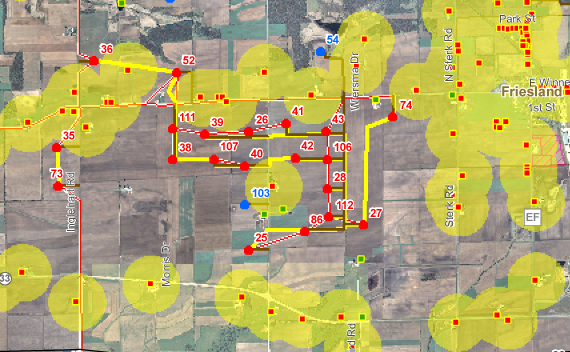
NOTE FROM THE BPWI RESEARCH NERD:
The project mentioned below was sited with the same setbacks and noise limits used to site the We Energies Glacier Hills project. (Detail maps above)
NO EASY SOLUTION TO WIND TURBINE PROBLEM
The Associated Press
VINALHAVEN, Maine (AP) -- The CEO of the electric cooperative that installed wind turbines on Maine's Vinalhaven island says there's disagreement over data suggesting they're too noisy.
Fox Island Wind CEO George Baker says his experts dispute the findings of a Department of Environmental Protection consultant who says the turbines violate nighttime noise limits.
State law sets a 45-decibel limit. Baker says his experts believe it was ambient noise from wind rustling through trees that exceeded 45 decibels, not the turbines themselves.
Baker says it'll be a difficult issue to resolve. He told The Associated Press on Tuesday that slowing the turbine blades to lower the noise level by a couple of decibels may not make appease critics. And lowering it further could hurt the economic viability of the project.
